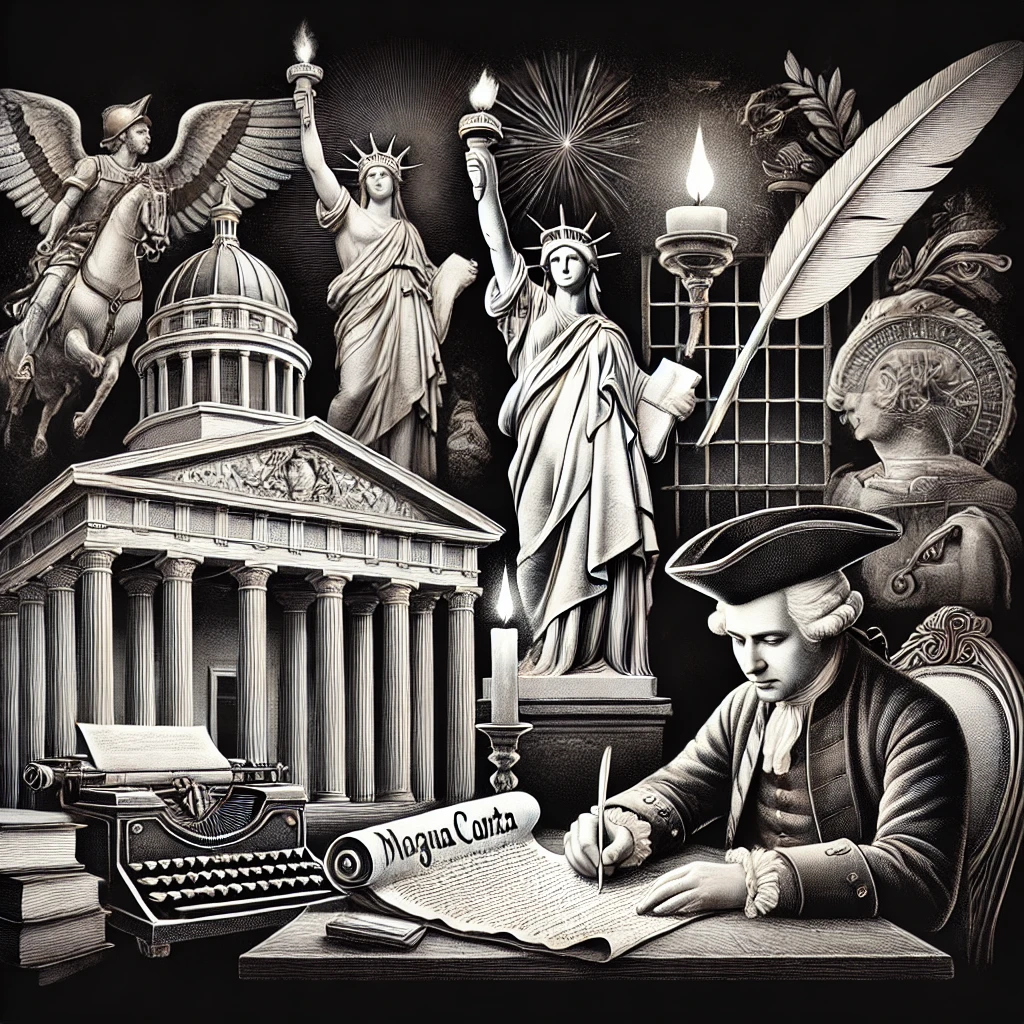The United States was founded on principles of limited government, individual rights, and a balance of powers. These ideas, influenced by Enlightenment thinkers like John Locke, emphasized the protection of natural rights—life, liberty, and property. Locke’s philosophy shaped the Founders, who envisioned a nation where government existed solely to serve and protect its people. This vision found formal expression in the Declaration of Independence, drafted by Thomas Jefferson in 1776. Jefferson’s words proclaimed that governments derive “their just powers from the consent of the governed,” setting the foundation for self-rule.
The drive to form a new nation arose from the colonies’ rejection of British rule, characterized by excessive taxation, restrictions on trade, and the erosion of basic freedoms. These grievances underscored the dangers of unchecked government power and fueled the determination to establish a system that protected individual liberties. The Declaration of Independence articulated these grievances against King George III, accusing him of erecting “a multitude of New Offices, and sent hither swarms of Officers to harass our people, and eat out their substance.” It rejected monarchy and centralized tyranny, laying the groundwork for governance rooted in accountability and individual freedom.
After achieving independence, the United States adopted the Articles of Confederation in 1781 as its first governing framework. Emphasizing state sovereignty and limited central authority, the Articles reflected a deep-seated fear of replicating the tyranny the colonies had fought to escape. However, the Articles created a loose confederation where the national government lacked the power to tax or regulate commerce, leading to inefficiencies and disunity. The lack of a unified fiscal policy and the inability to resolve disputes between states revealed the shortcomings of this system.
The failures of the Articles of Confederation led to the Constitutional Convention in 1787, where delegates crafted a new governing document. The Constitution sought to balance federal authority with protections for individual liberties, incorporating checks and balances and a separation of powers to prevent tyranny. James Madison described this vision in Federalist No. 51: “If men were angels, no government would be necessary. If angels were to govern men, neither external nor internal controls on government would be necessary.”
While the Constitution established a stronger federal structure, it sparked concerns about centralized power. Critics like Patrick Henry and George Mason warned that the absence of a declaration of rights could lead to government overreach. Mason argued, “There is no Declaration of Rights,” fearing that individual freedoms would lack adequate protection. These concerns ultimately led to the adoption of the Bill of Rights in 1791, securing essential freedoms such as speech, religion, and the right to bear arms.
The Bill of Rights explicitly limited government authority, with the Tenth Amendment reserving powers not delegated to the federal government for the states or the people. Thomas Jefferson emphasized this principle, writing, “I consider the foundation of the Constitution as laid on this ground: That all powers not delegated to the United States, by the Constitution, nor prohibited by it to the states, are reserved to the states, or to the people.” These amendments became critical safeguards, ensuring that governance remained accountable and restrained.
Economic freedom was another cornerstone of the nation’s foundation. The early United States embraced property rights and minimal government interference, fostering a largely laissez-faire economy. This allowed individuals and markets to thrive with limited regulatory constraints. John Adams underscored the importance of property rights, stating, “The moment the idea is admitted into society that property is not as sacred as the laws of God, and that there is not a force of law and public justice to protect it, anarchy and tyranny commence.”
The formation of the United States reflected the Founders’ commitment to creating a government that protected individual rights and ensured liberty. The Revolution was a rejection of tyranny, and the new government was designed to prevent similar overreach. While the Articles of Confederation represented a vision of decentralized power, their practical failures highlighted the need for a more effective system. The Constitution, though a stronger framework, has been critiqued for granting broader powers to the federal government, raising concerns about potential overreach.
The Founders’ vision was not static but dynamic, requiring ongoing vigilance to maintain the balance between liberty and authority. Thomas Jefferson’s warning remains a timeless reminder: “The price of freedom is eternal vigilance.” The story of the United States’ founding is one of bold ideals tempered by pragmatic compromises, reflecting the enduring tension between governance and liberty. The commitment to individual rights, limited government, and economic freedom continues to shape the nation, inspiring those who seek to preserve these principles. Patrick Henry’s declaration, “Give me liberty, or give me death!” remains a powerful testament to the ideals that defined the country’s birth.



